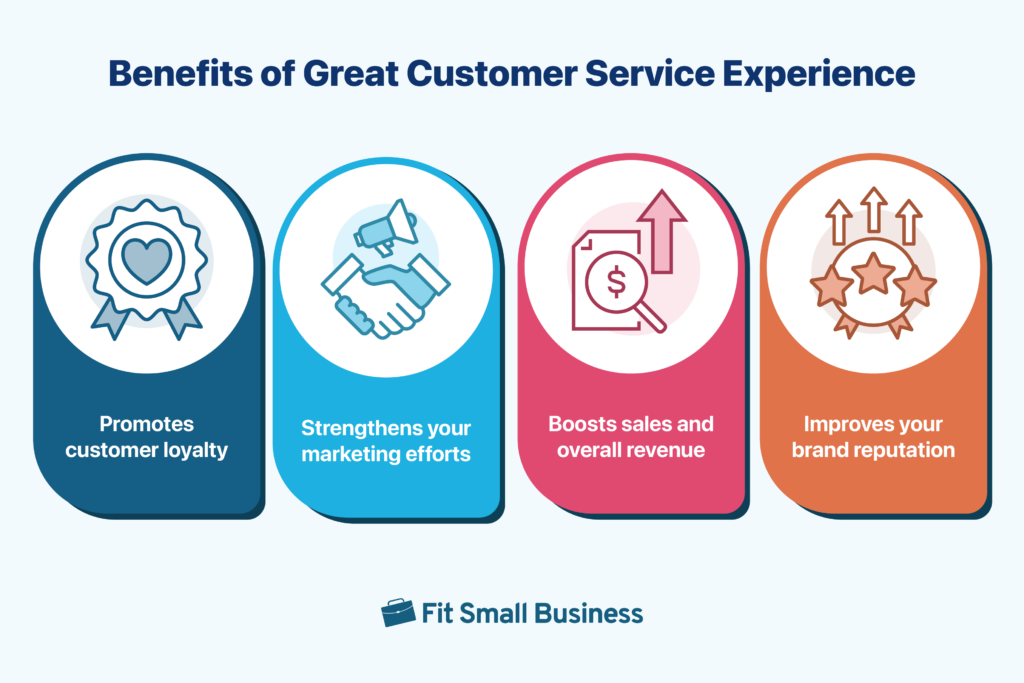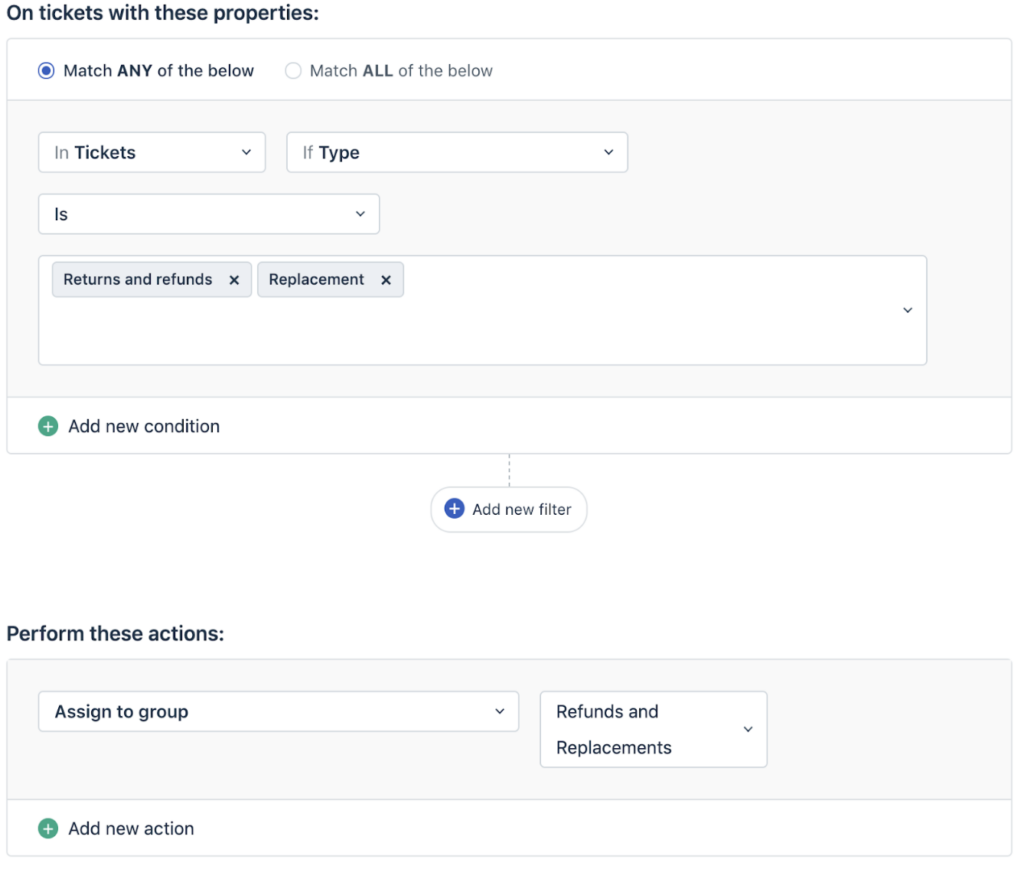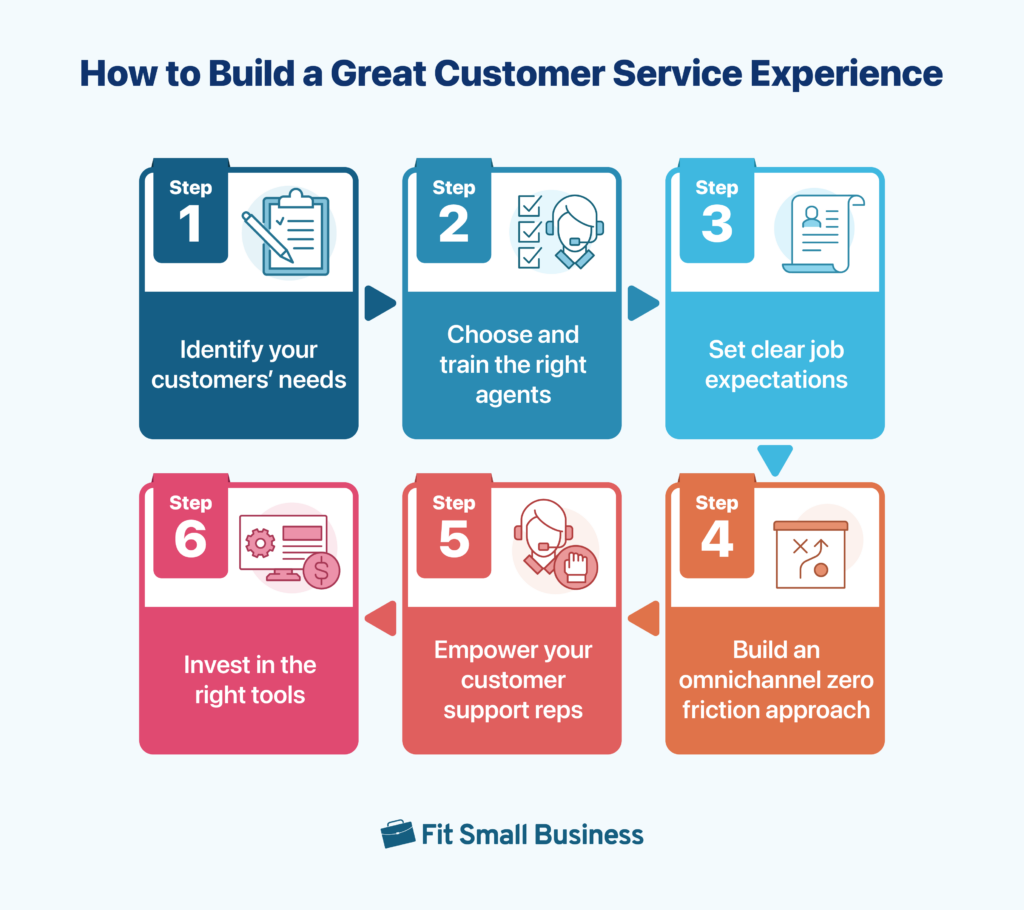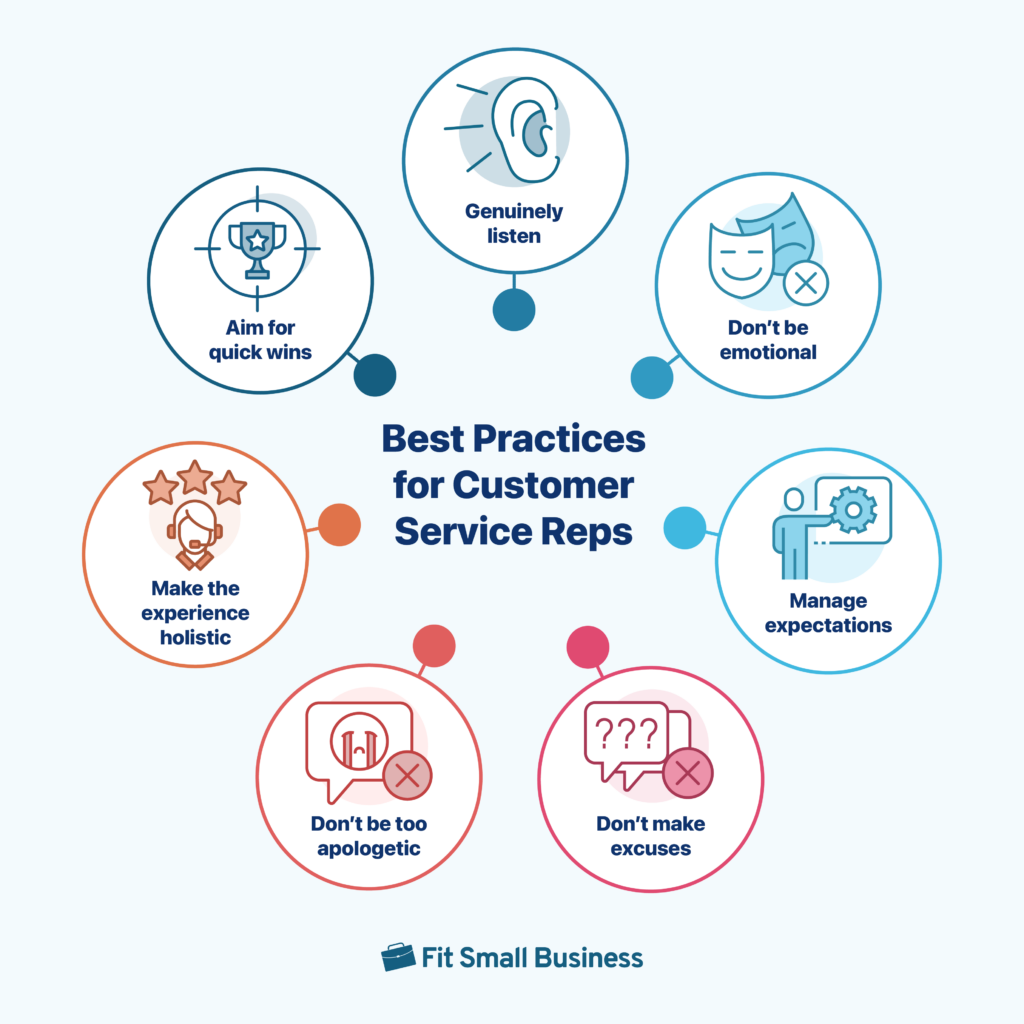Customer service experience is a customer service aspect based on the customer’s interactions with your business’s sales and service teams across the sales cycle—before, during, and after purchasing your product, service, or solution. But the best approach must be holistic, proactive, omnichannel, and ongoing, encompassing the totality of customer experience. Learn what customer service is, including the best strategies, examples, and tips below.
Benefits of Great Customer Service Experience
The best way for a business to be remembered is through the extraordinary experiences it provides its customers. Customer service teams should brainstorm to create effective strategies to wow customers. Prioritizing enhancing experience in customer service is a must for the following reasons:

Promotes Customer Loyalty
About 59% of consumers believe that artificial intelligence (AI) in customer service will completely change how they interact with brands. With the rise of AI technology, it’s more crucial than ever to provide empathetic, rather than just efficient, customer service to foster customer loyalty. The best companies create customer loyalty programs to attain this goal. You can start by brainstorming with your reps and thinking of the best ideas for a customer loyalty program.
Pro tip: You can use a loyalty program management software like TapMango to create and manage your loyalty program independently. This tool can help streamline your customer service, marketing, and sales operations. The best software provides automation features and unique loyalty elements to promote customer retention and drive sales.
Strengthens Your Marketing Efforts
When customers spread the word about your business through social media, phone calls, text messaging, or face-to-face, more people become aware of your brand—meaning more potential sales for your business. This means you need to monitor your customers’ word-of-mouth referrals, which about 63% of marketers already do. When you know what makes customers feel valued through analytics, like sentiment analysis, you can serve your clients better.
Boosts Sales and Overall Revenue
Happy customers provide more referrals or potential customers that your sales team can further nurture to win more deals. The domino effect of customer support experience translates from marketing to sales qualified leads—who express high-level interest in your product demo or sales offer. With more leads, you increase your chances of winning sales, boosting your overall business revenue.
Improves Your Brand Reputation
About 67% of customer service leaders say bots can help establish a stronger emotional connection with clients, which is crucial in establishing a good brand reputation. Teams can leverage AI bots’ suggested next steps or call scripts, track customer sentiments on social media, and use an AI assistant to respond to customers quickly. With AI and humans working together, customer service teams can provide the best client experience.

Zoho CRM shows customer sentiment keywords distributed in quadrants. (Source: Zoho CRM)
How to Build a Great Customer Service Experience
Customer service experience involves earning trust, providing value, and, ultimately, building good customer relationships. This entails an ongoing process from pre-purchase to after-sales—across the entire buying cycle and the customer’s lifetime interaction with your brand. You can adopt this step-by-step guide to help you create excellent customer service in your small business.
1. Identify Your Customers’ Needs
Research work is crucial in identifying the needs of your customers. One of the most effective ways to do this is through surveys. Customer service and sales teams can use customer satisfaction survey templates for this purpose. Survey data can be stored and retrieved in the CRM to inform decision-making. Moreover, creating feedback forms and conducting interviews are effective ways to understand customers better.
2. Choose and Train the Right Agents
Hiring the right people means onboarding customer service reps with a genuine interest in helping customers. Business owners and managers should hire individuals with a positive attitude and the right perception of customer service experience. Train your reps to be more patient and empathetic. You can do all of these by seeking the help of a customer service expert or consultant. Creating a customer service program can also help improve agent performance.
3. Set Clear Job Expectations
Once you have chosen the right people, let your customer support team members know what is expected of them. If you want your reps to provide the best experience to customers, conduct regular training sessions and remind them of their job responsibilities. These activities can help them hold themselves accountable for their actions.
4. Build an Omnichannel Zero Friction Approach
One of the best strategies to win customer support experience is to use all avenues and to connect and engage with your customers. They must feel a smooth flow and transition regardless of the place they want to interact with you—your website, social media, over the phone, etc. Moreover, customer feedback responses come in handy to acknowledge your customers, improving their overall experience.
5. Empower Your Customer Support Reps
In order for your customer reps to confidently serve customers, empower them by seeking their feedback about your processes or procedures. Take their insights seriously and encourage them to be proactive in expressing their opinions and suggestions to improve customer experience. Moreover, address their needs by soliciting feedback or employee experience surveys.
6. Invest in the Right Tools
Small businesses can leverage customer service software to save time, money, and resources in hiring several customer service reps. The best customer service systems are affordable and come with ticketing, performance monitoring, and communicating tools like phone, email, live chat, text, and AI chatbot.

Help Scout helps agents formulate quick replies to serve customers better. (Source: Help Scout)
Best Customer Service Experience Examples
Customer service for small businesses must be proactive to avoid significant losses. It is not all about resolving customer complaints or concerns, which is a reactive approach. Instead, client service experience involves managing all customer touchpoints, which is a proactive method that teams must adopt to provide extraordinary experiences to customers. Take a look at the following customer service experience examples:
Best Practices for Customer Service Reps
Customer service is every company’s lifeblood. However, organizations should not only consider customer service as one part of their business operations. While you can easily hire customer service reps based on their career background, training them to provide a positive customer service experience is easier said than done. Below are some helpful tips to foster an excellent client experience.
Aim for Quick Wins
In the customer service industry, quick wins are small, meaningful accomplishments that are easy to attain during the first few months of a new customer relationship. While reps can strive to win customers with random acts of kindness (RAK)—like staying longer on a call with a sad customer to keep them loyal for the long term—implementing consistency in customer service processes is important. This ensures quick wins, providing customers with positive customer experiences.
Genuinely Listen
Customers don’t patronize the best companies. Instead, they choose to stay loyal to businesses that understand their needs—made possible by genuine listening. True listening builds trust and shows respect. It also fosters empathy by relating to what the other person feels. When reps listen closely without interrupting the customer, the person feels valued and their feelings validated, creating psychological safety to entice sharing and engagement.
Don’t Be Emotional
A customer can be emotional, especially when expressing thoughts and emotions about a poor experience with a product, service, or employee. Some customers even yell once they reach a live rep over the phone because of their frustration with the many attempts to bypass the interactive voice recording (IVR). Customer service reps must stay professional and focus more on sorting out the problem than negatively reacting to the situation for resolution.
Manage Expectations
In customer support, managing expectations must be faced with integrity, accuracy, proof, and a solution. If a rep promises a refund within 24 hours and it is processed in 72 hours, this creates a negative customer experience. Therefore, overpromising just to appease an angry customer is not advisable. In line with this, reps must strive to provide the best customer experiences following service level agreements (SLA).
Don’t Make Excuses
Making excuses or justifying an issue or mistake can make things worse, staining the customer relationship. Reps should avoid overemphasizing the root cause of the problem. A one-sentence explanation is highly recommended. The rest of the statement must focus on what the rep can do to help the customer. Most importantly, remember that a customer’s experience in customer service can make or break loyalty, affecting retention and revenue.
Don’t Be Too Apologetic
Customer service agents usually say sorry even if it’s not their fault. Your reps represent your company, but they don’t have to deal much with the sad situation. It’s a matter of owning the call and fixing the problem. A one-liner apology is enough, and the rest of the rep’s answer should include a solid solution or next best step to resolve the customer’s reason for contact.
Make The Experience Holistic
One of the most common mistakes organizations make is looking at customer service as resolving the customer’s issue alone. However, this is just one part of the puzzle. The best approach to fostering a great customer experience is holistic. This involves a proactive way of managing customers before an issue even arises, covering multiple touchpoints across the buyer’s journey and even after sales.

Freshdesk lets users set automation rules to assist reps in providing faster ticket resolution. (Source: Freshdesk)
Frequently Asked Questions
The top skills that customer service reps must possess to provide excellent experiences to customers include good communication skills, empathy, and listening skills. A customer service rep should show confidence in answering questions. Serve customers by listening to them genuinely and providing them with accurate and satisfying results and resolutions.
The four aspects of customer service include your customer service, marketing, sales, and product design and development teams. Managing customers across all business functions is crucial to creating an exceptional customer experience.
A great customer service experience is engaging, consistent, and holistic. Build the best client experience by understanding and anticipating your customers’ needs. Using technology like CSS can help reps focus more on providing accurate and quick resolutions to customers.
Bottom Line
An exceptional customer service experience involves more than just a “resolve-the-problem” approach—it’s when reps go the extra mile providing customer service to potential and existing customers. A great customer experience also depends on the unique needs of your customers and your business. In line with this, CRM systems like Freshdesk have customer support tools like ticketing, email, and telephony features, helping reps deal with customers with zero friction.




